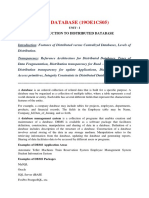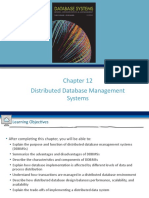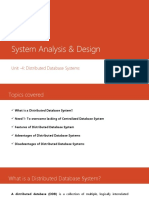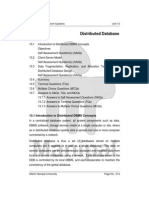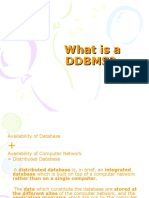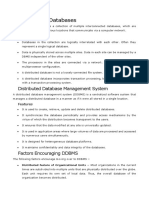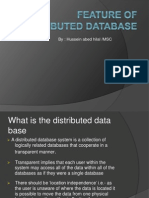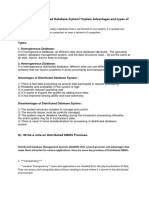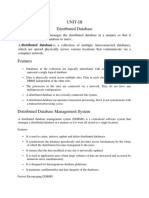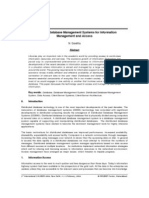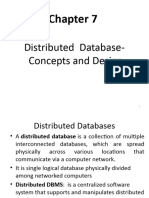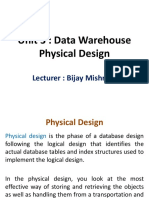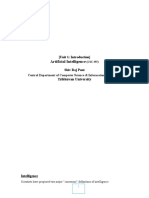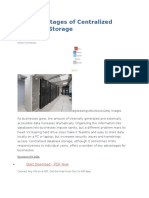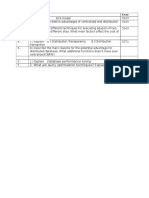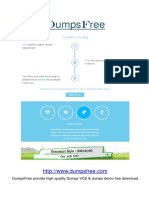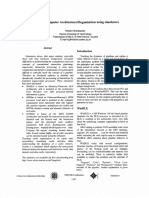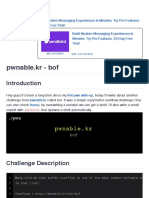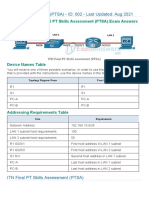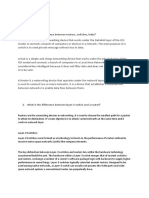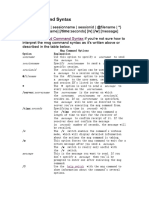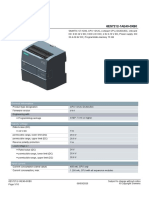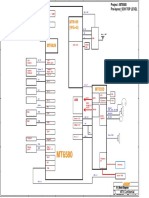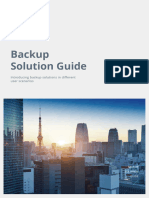0% found this document useful (0 votes)
149 views3 pagesAdvantages and Functions of DDBMS
This document discusses the advantages and disadvantages of distributed database management systems (DDBMS) as well as their key characteristics and functionality. The advantages of DDBMS include data being located near sites with greatest demand, faster data access and processing, facilitation of growth, improved communications, and reduced operating costs. Disadvantages include increased complexity of management and control, security issues, lack of standards, and increased costs. DDBMS must perform all functions of a centralized DBMS transparently while handling additional functions imposed by distributed data and processing.
Uploaded by
kamalshrishCopyright
© © All Rights Reserved
We take content rights seriously. If you suspect this is your content, claim it here.
Available Formats
Download as DOCX, PDF, TXT or read online on Scribd
0% found this document useful (0 votes)
149 views3 pagesAdvantages and Functions of DDBMS
This document discusses the advantages and disadvantages of distributed database management systems (DDBMS) as well as their key characteristics and functionality. The advantages of DDBMS include data being located near sites with greatest demand, faster data access and processing, facilitation of growth, improved communications, and reduced operating costs. Disadvantages include increased complexity of management and control, security issues, lack of standards, and increased costs. DDBMS must perform all functions of a centralized DBMS transparently while handling additional functions imposed by distributed data and processing.
Uploaded by
kamalshrishCopyright
© © All Rights Reserved
We take content rights seriously. If you suspect this is your content, claim it here.
Available Formats
Download as DOCX, PDF, TXT or read online on Scribd
/ 3








